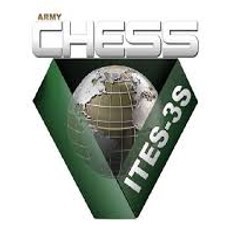This blog highlights one of the Top Barriers in the Business Analysis Role as identified in a survey by International Institute of Business Analysis (IIBA) of 4,200 professionals across 165 countries. Here we look at best practices to help you to break through barriers within business analysis.
The Business Problem
The focus of this blog is on Limited People Resources. This barrier speaks to two types of people related limitations: 1) a limited number of high-performing Business Analysts to perform business analysis; and 2) a limited number of knowledgeable Subject Matter Experts (SMEs) to engage in business analysis. Each of these “people” related limitations significantly impact the effectiveness of a business analyst, the business analysis process and resulting deliverables.
- A limited number of high-performing business analysts means that there is a mismatch or gap between the needs of an organization for business analysis and the number of high-performing business analysts available to support/fulfill those needs. The result is that those limited number of business analysts are spread across many projects. Therefore, each project does not gain the value of the deep analysis necessary to identify and analyze the requirements (business requirements and/or business systems requirements) to enable effective solutions.
- Lack of (or lack of access to) sufficient SMEs means that there is a mismatch between the deep knowledge that business analysts need to acquire to be effective and the availability of knowledgeable SMEs to engage in analysis to provide the deep knowledge. The result is a knowledge gap. Accordingly, business analysts need to glean business knowledge from alternative sources (sources other than knowledgeable SMEs).
-
The inability to identify and deeply analyze the full range of business requirements. Business analysts are responsible for identifying and analyzing business requirements and where appropriate going deeper into specifying business systems requirements. Without effective and sufficient business analysis there is a significant risk of missing key requirements and/or misinterpreting requirements, resulting in solutions that do not meet business needs.
-
Increased project costs. Without proper business analysis, project costs typically increase due to rework, delays, and scope creep. Business analysts identify, analyze, and specify requirements early in the project lifecycle, enabling tighter scoping, better planning, better cost estimation, and the ability to better set customer expectations.
-
Poor quality deliverables. Business analysts are essential to ensure the quality of analysis and the resulting requirements deliverables. They work closely with stakeholders to ensure that requirements are clearly identified, analyzed, validated and specified. Poor quality deliverables result in fuzzy ambiguous incomplete requirements that result in solutions that do not meet business needs.
-
Ineffective communication. Business analysts act as a bridge between the business SMEs and other stakeholders and technical teams. They help to ensure effective communication and collaboration among and between stakeholders and stakeholder groups. Poor communication also results in fuzzy ambiguous incomplete requirements that result in solutions that do not meet business needs.
-
A limited number of knowledgeable SMEs means that the organization may not potentially have sufficient depth of business knowledge in the space being analyzed to fully identify and deeply analyze requirements. The result is gaps in business requirements. In other words, the SMEs know what they know but they don’t know what they don’t know. This is an issue because business requirements and business systems requirements are forward facing to support changing needs of an organization.
-
Likewise, a lack of business analysis and/or SME resources makes it difficult for an organization to keep up with and adapt to changing business needs and changing business requirements. Without adequate analysis resources, organizations often struggle to identify new opportunities, respond to market trends, and adjust their strategies accordingly.
-
Limited access to knowledgeable SMEs is an indicator of deeper issues between an organization and its business analysts. Yes, it can be argued by someone in management or leadership that “our SMEs are very busy and simply do not have the time to engage in analysis.” However, in my experience that argument is typically subterfuge to mask the deeper problem that those decision-makers and/or SMEs simply do not see the value/benefits in allocating their time to engage in analysis.
-
A shortage of high-performing business analysts impacts the quality and accuracy of business analysis. It takes longer to successfully (e.g., quality of work) complete analysis tasks which leads to delays in decision-making and downstream design, development and implementation.
-
Insufficient data collection and analysis. With limited business analysis and SME resources, business analysts may not be able to capture and analyze sufficient data to make informed decisions. This may result in incomplete or inaccurate information, which often results in suboptimal decision-making.
-
Increased risk of errors and oversights. With limited business analysis and/or SME resources, the risk of errors and oversights in business analysis increases. This often results in incorrect conclusions, missed opportunities, and/or poorly informed decisions.
Best Practice Guidance
-
The Value of Business Analysis. If management and leadership clearly recognize the value of business analysis and the value of high performing business analysts then there is a compelling business case to proactively recruit, onboard, train and retain sufficient business analysis talent to support the needs of an organization.
However, if management and leadership does recognize the value, then the first step is clearly providing direct line of sight linkage regarding the impact of high-performing business analysts and business analysis on customer and business value creation. For example, Better Requirements (complete, unambiguous, validate, delivered faster) result in better business systems (effective functionality, great customer experience, less maintenance, delivered faster) result in better business processes (organizational effectiveness and operational efficiency) result in increased customer and business value. However, also provide examples of the result of deficient analysis and the impact on the organization.
-
Techniques and Methods. Members of the business analysis team often come from a variety of backgrounds and experiences and, accordingly, bring a wide range of techniques and methods to analysis – some good, some perhaps not so good – particularly non-standard ad-hoc techniques and methods. Accordingly, provide your team with business analysis best practice techniques and methods. Then ensure analysts apply the best practice techniques and methods consistently among the team and across project. The analysis team becomes significantly more effective and efficient in performing analysis, resulting in the team having the capacity to perform high-quality analysis faster. In other words, more capacity from existing resources.
-
Citizen Analysts. There is a movement today to provide tools to end users to enable some basic development at the user level. This takes some of the software development burden off the professional IT developers. The movement is referred to as Citizen Developers. This concept also applies to business analysis. Consider providing business analysis training to users and other SMEs so that when they perform some initial analysis in their business space, these Citizen Analysts can then engage with professional business analysts at a higher level. This takes some of the basic initial analysis burden off the professional analysts. This approach increases the speed and quality of analysis when professional business analysis resources are spread thin across the organization.
-
Flexible Work Arrangements. Consider offering flexible work arrangements, such as part-time and/or remote work to attract and retain talented resources who may not be able to work full-time in a traditional office setting.
-
Outsourcing and Staff Augmentation. As the organization staffs up its business analysis team, the business analysis talent gap can be supported via contract resources. Contract resources are also useful for managing fluctuations in the demand for business analysis talent. This can help relieve some of the burden on your internal team, allowing them to focus on the highest priority tasks.
-
Prioritization. If outsourcing and/or staff augmentation is not available, then the key is to focus on the most critical tasks and projects and deprioritize or delay less important work. This helps ensure that your limited business analysis resources are being used in the most effective way possible while you are building the internal team.
-
Alternative Sources of Business Knowledge. If the issue is lack of knowledgeable Subject Matter Experts (SMEs), business analysts can close the gaps in SME business knowledge by looking at alternative sources of business knowledge inside and outside of the organization independent of SMEs. For example, there are many existing artifacts within the organization such as policy and procedure manuals, user documentation, previous analysis work, etc. that analysts can review to help close the gap. External to the organization there are industry and trade associations. Regardless of the business space under consideration (e.g., Customer Billing, Recruiting, HR, Order Fulfillment, etc.), there is typically an industry association that specializes in that space. Check out their website, join the association and gain access to deeper knowledge. Also consider joining industry groups on LinkedIn and other social media sites.
-
Provide Exceptional Value for SME’s Time. If the issue is lack of access to SMEs, then it’s important to determine the root cause. Every SME in every organization today has more work on their plate than time necessary to complete everything. Often, SMEs choose not to allocate the time to engage in analysis because they do not see the value of analysis vis-à-vis their core day-to-day work that they need to continue moving forward. However, if SMEs clearly see the value in engaging in analysis, they will engage. And they will see the value if they are engaged by high-performing business analysts with a high “get it” factor that engages the SMEs in high quality business conversations, not just a simple “order taking” resulting in lists of ambiguous requirements. Also see the bullets points at the beginning of this section “The Value of Business Analysis” and “Techniques and Methods.”
Clearly, there is no magic solution to overcoming limited business analysis and SME resources. The most effective approach depends on the specific needs and challenges of your organization. The best practices described above are an excellent starting point.
Subscribe to my blog | Visit our Knowledge Hub
Visit my YouTube channel | Connect with me on LinkedIn
Check out our Business Analysis Training Courses and Consulting Services




















